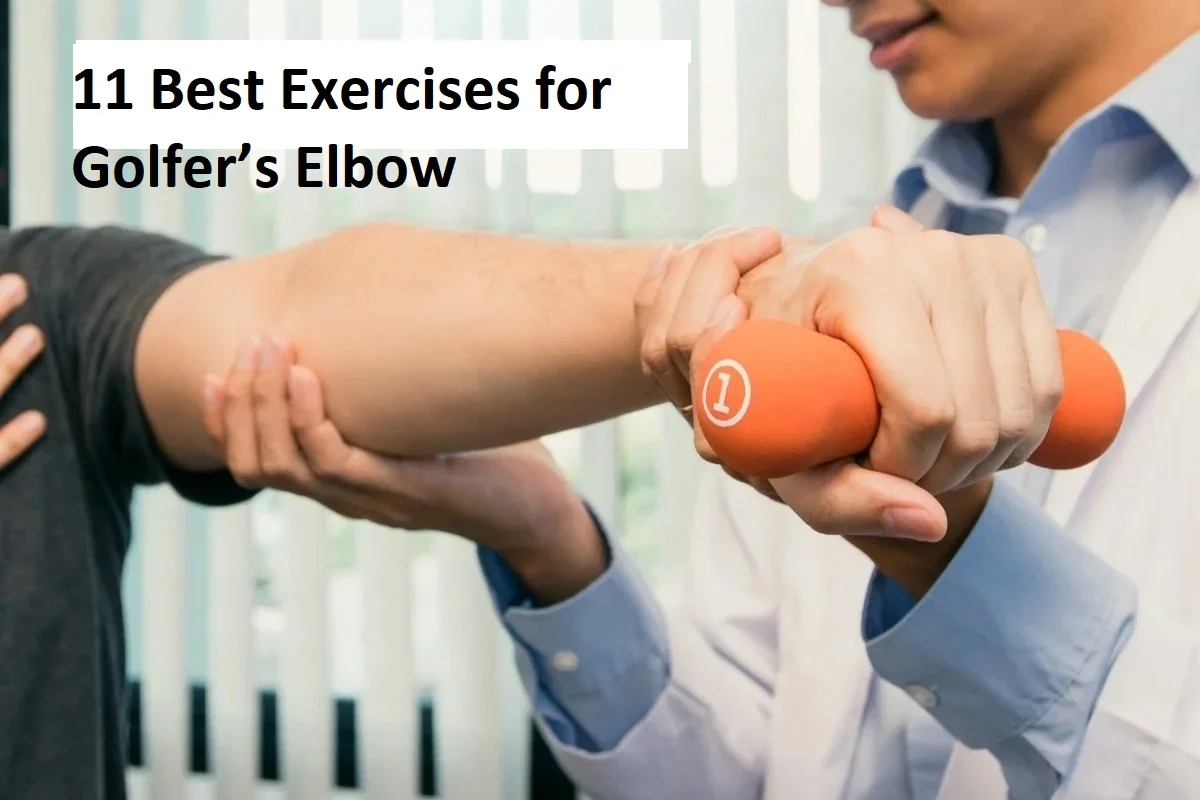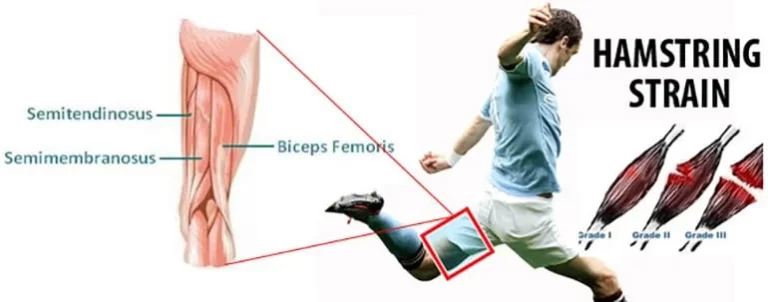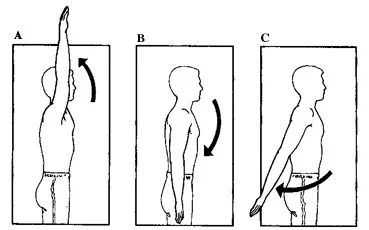11 Best Exercises for Golfer’s Elbow
Table of Contents
Introduction
Exercise for a Golfer’s elbow is an essential part of your overall treatment program, that helps to strengthen your affected weak muscles and also improve flexibility and relieve pain.
Golfers Elbow (Medial epicondylitis) is a type of tendinitis that affects the inside muscle tendon of the elbow joint. It develops where tendons in the forearm muscle tendon attach to the bony area on the inside of the elbow joint. Due to injury, they can become swollen and painful. It can occur from any activity involving overuse of the arms or wrists, including tennis and baseball.
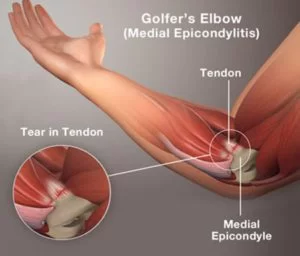
Best Exercises For Golfer’s Elbow
To build strength and pain-free movements, prevent and relieve pain, and increase flexibility, do the following exercises two times per day. Build up gradually and gently over time. Avoid those Exercises or activity that causes strain or stress. don’t force and be gentle with any of the movements.
You may experience gentle stretch, sensations, and slight discomfort during these exercises, but it shouldn’t go beyond that. If you feel pain or any of your symptoms worsen, stop doing the exercises and just rest. Give yourself time to relax completely, use an ice pack for pain relief, and talk to your doctor if you don’t see changes in a few days.
Isometric wrist strengthening (extension)
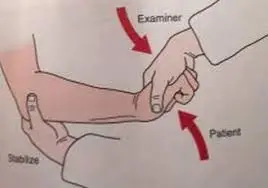
In the seating position, place your affected forearm on a table, your palm facing down. Place your nonaffected hand on the back of your affected hand. Press your affected hand up, using your nonaffected hand to create force by pressing down. Continue this exercise for 10 seconds, gradually increasing the resistance on your hand. Gently release. Do 10 reps.
Isometric wrist strengthening (flexion)
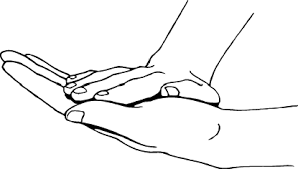
In the seating position, position your affected forearm on the edge of the table, your palm facing up. position of your nonaffected hand on the palm of your affected hand. Press your affected hand up, using your nonaffected hand to create force by pressing down. Continue this exercise for 10 seconds, gradually increasing the resistance. Gently free. Do 10 reps.
Resisted wrist extension
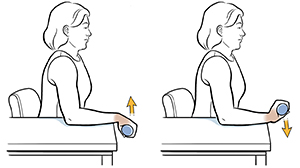
in the seating position grab a weight with an affected forearm on the edge of the table palm facing down gradually lower your hand down before raising it back to the main position do 1-4 sets of 10 reps.
Resisted wrist flexion
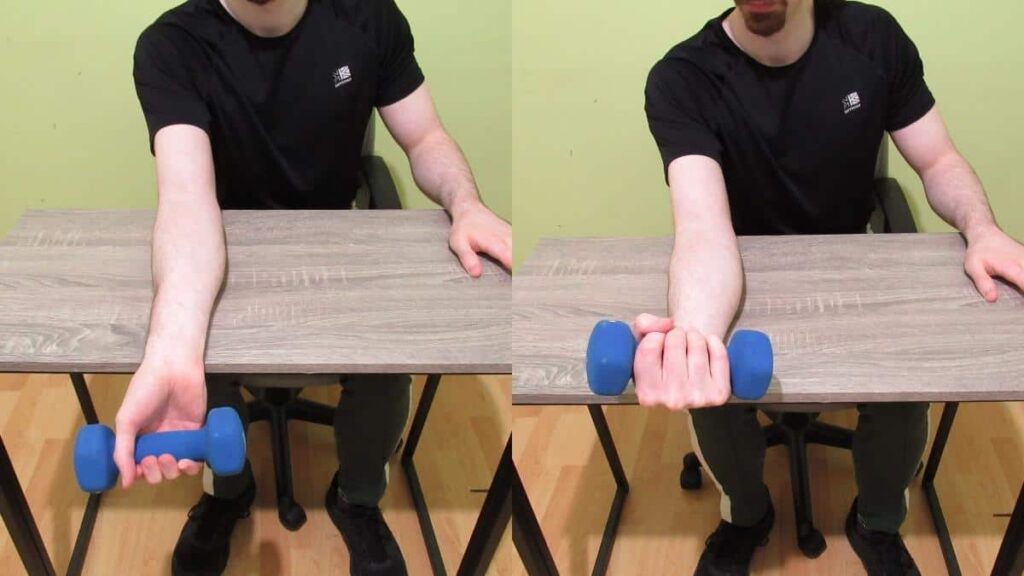
in the seating position grab a weight with an affected forearm on the edge of the table palm facing upward, and gradually lower your hand before raising it back to the original position do 1-4 sets of 10 reps.
Golfer’s elbow stretch
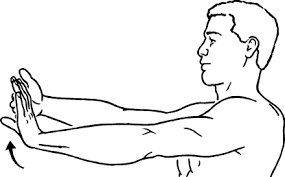
You will feel this stretching on the inside of your forearm. in standing position Extend your affected arm in front of you with your palm and fingers facing up. Use your nonaffected hand to gently pull your affected hand fingers and wrist toward your body. Hold this stretch for 15 seconds. Do 2–3 reps.
To build strength, relieve pain and prevent, and increase flexibility, do the following exercises twice daily.
Build up gradually and gently over time. Do these exercises before, during, and after any activity that causes stress or strain. You may experience slight discomfort, aches, and sensations while doing these exercises, but it shouldn’t go beyond that. If you experience pain or your elbow joint-related symptoms worsen, stop doing the exercises. Use an ice pack and Give yourself time to rest completely, and if you don’t see a recovery in a few days, talk to your doctor.
forearm supination and pronation
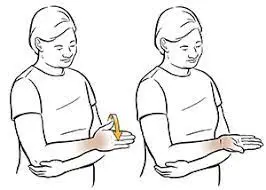
- in this exercise weight and dumbbell, hand is needed. (500gms,1 kg, 1.5 kgs) Begin each stage with no weight. When you can complete 20 repetitions on two straight days with no hurry move forward in the program by increasing weight (begin with 500 gms., advance to 1 kg., and end with 1.5 kgs.) Flexion of your elbow joint to 90 degrees with the support of your forearm on a table with your wrist joint placed at the edge.
- Straighten your elbow slightly. support your arm on the table Fully straighten your elbow joint and slight elevation of your arm is not supported by the table.
Stress Ball Squeeze
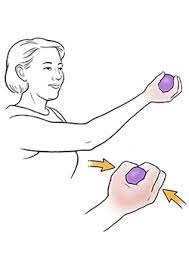
- A stress ball is needed for the forearm muscle strengthening exercise, after finishing the above-staged strengthening exercises this exercise should be done. Your arm & elbow joints’ relaxed position for this exercise should match the stage you are completing.
- Repetitions: 10 reps,1x a day
- Days per week: 5 to 7
Finger Stretch
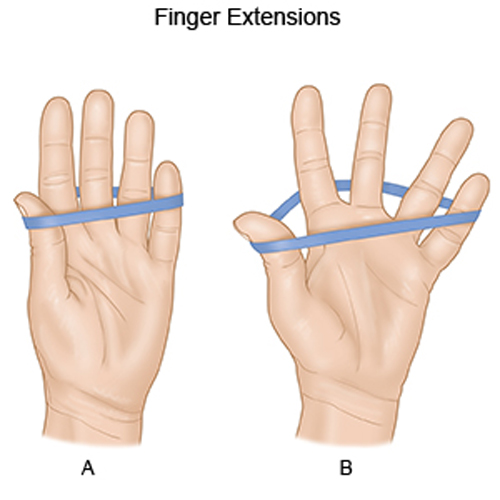
- An elastic band is needed for this exercise after completing the above-staged exercise. in this strengthening exercise Your arm and elbow joints are in a relaxed position.
- Repetitions: 10 reps,1x a day
- Days per week: 5 to 7
Wrist Radial Deviation
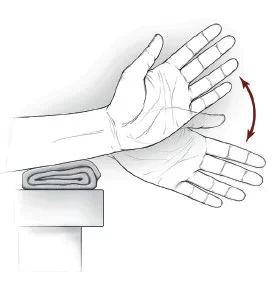
- In this exercise wrist joint can move into is from side to side, known as radial & ulnar deviation. the radial deviation is an easy movement that can be done to increase good overall wrist health and strength. This movement is very small. place your wrist joint on the table as shown in the image, so that it can move freely. Hold the hand in this position.
Tharaben wrist flexion
in a sitting position on the chair step on the bend Hold the middle of the loop in your right side hand with your palm up. right side forearm on your thigh for support, bend your wrist upward. bend your wrist joint upward. hold and slowly return the repeat switch to your left arm.

Grip Strengtheners
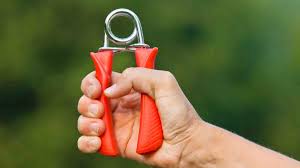
- A grip-strengthening hand-grippers can also improve the outcomes of your wrist joint, elbow joint, and forearm rehabilitation process. There are a variety of options hanging on your goals and what muscles you want to primarily target. simple gripping ball or pillow or stress ball. Daily hand & wrist joint strengthening exercises with these tools can be done anywhere & can assist you to experience your best.
Golfer’s elbow exercises you should avoid
- you should avoid Heavy lifting, especially in a palm-up position.
- Repetitive pulling or lifting should avoid
- Movements that involve your symptomatic side.
- normal movement can help your muscles absorb the sudden physical stress and energy .before your activity, stretching is important, as properly lifting weights and knowing when to rest.
Other Treatment Options for Golfer’s Elbow
Rest, Using ice and a hot pack on your forearm. Taking anti-inflammatory medication. Wearing a brace on the medial side of the elbow. Golfer’s elbow is a form of tendonitis that causes pain and inflammation in the tendons that attached the forearm to the elbow. golfer’s pain area on the bony bump on the medial side of your elbow joint may radiate into the forearm. massage helps you to get better from a golfer’s elbow much faster than just resting. It normally gets better with resting the elbow joint and using an ice pack. The medical term is medial epicondylitis.
working on strengthening your forearm muscles by squeezing a tennis ball and or by lightweight lifting for five to six minutes at a time changing your pattern and slowing down your golf swing to allow your arm to absorb minimum shock using the perfect form to avoid overloading your muscles using lighter graphite clubs in place of heavier golfing irons staying hydrated by drinking plenty of water before, after, and during your golf game.
How to Prevent the Golfer’s Elbow?
One of the best prevention techniques is to warm up before you golf. This gets your blood flowing and raises your muscle temperature, preparing your body and elbow joint for more intense activity. Stretching your shoulders, arm, and back before each session. you could try wearing a balance splint or brace If you’re already feeling pain. These devices help distribute the pressure throughout the tendon and muscle instead of directly over the injury site. You can also try using a compression bandage for swelling. You can find compression bandages and counterforce braces for golfer’s elbow at your local pharmacy or online or sports shop.
Elbow pain will generally get better within a few days. Treatments may include physical therapy and cortisone or platelet-rich plasma (PRP) injections. Rarely cases will need surgery known as an open medial epicondylar release procedure. This will include removing damaged tissues from the elbow joint. You should also see a doctor if you have symptoms more severe than stiffness and general pain. These symptoms include: tingling weakness, numbness, swelling, redness, fever, and movement problem of the arm.
Summary
The simple and effective exercises can help you subside the symptoms of a golfer’s elbow as soon as they increase. You can do these exercises two times per day.
There are also many home remedies and prevention methods to prevent your condition from worsening follow a healthy diet, get plenty of rest and massage, and exercise a few times per week. Your symptoms should subside within two to three weeks of physiotherapy treatment. If you don’t see improvement after this time, see your physiotherapist.
FAQS
Use lightweight and squeeze a tennis ball Strengthen your forearm muscles. Stretch before your activity. jogging and walking for a few minutes to warm up your muscles. Fix your forearm. Use the right equipment. Lift properly. Know when to rest.
physiotherapy solves people’s conditions like elbow injuries or sustained elbow surgery. These exercises through the patient’s elbow range of motion increase, help to maintain strength, and improve joint mobility.
Wrist Stretching
Hold your affected arm with your elbow straight and palm facing upward. Push the back of your hand towards you until a gentle stretch is felt on the inside of your forearm. Hold for 20 to 30 seconds. Repeat 3 times a day.
movements that involve your symptomatic side, avoid repetitive pulling and lifting, and Heavy lifting, especially in a palm-up position. Repetitive pulling or lifting.
Bench presses, pushups, and chin-ups. exercises can strain your flexor muscles and tendon, increase irritation in your golfer’s elbow, and cause worsen your condition. Many wrist exercises can cause stress to your forearm and elbow, making the pain chronic and worsening your injury

